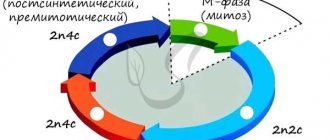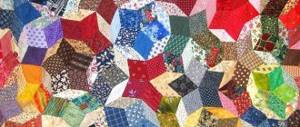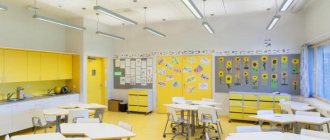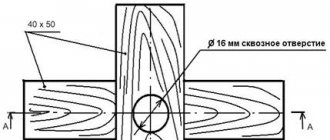Planning by technology
Create your teacher website PC and PPC courses Video lessons Olympiad Webinars for teachers
- home
- Technology (boys)
- Planning
Watch and download free lessons, tests, notes, presentations and other useful materials on technology for teachers and students. In this section you can get technology planning .
- All 3169
- Lessons 1577
- Presentations 487
- Tests 159
- Planning 341
- Events 103
- Other 502
- All classes
- For preschoolers
- 1 class
- 2nd grade
- 3rd grade
- 4th grade
- 5th grade
- 6th grade
- 7th grade
- 8th grade
- 9th grade
- Grade 10
- Grade 11
Additional general educational program graphic design studio "Creative" The graphic design studio program "Creative" is designed to prepare schoolchildren for participation in the All-Russian Junior Skills project... 09.28.2020 Gavrilov Alexey Gennadievich 16 0 |
| Types of welding and cutting of metals The types of welding are considered: electric and gas. Equipment, technology… 09/18/2020 Konstantinova Olga Viktorovna, Pokhvalny Alexander Viktorovich 24 0 |
| “Keyipkerler men decoration zhasau” KMZh decoration zhane keykerler turaly ұgym… 03/18/2020 Zhubanov Nagashybay Zhusipbekovich 238 0 |
| “Kauіpsіzdіk tekhnika erezhelerіn saktau” KMZh Bul zhosparda kauіpsіzdіk tekhnikason saktau erezhelerіn tolygymen korsetіlgen… 03/18/2020 Zhubanov Nagashybay Zhusipbekovich 217 0 |
| Technology for manufacturing hulls of ship models, for students of the first and second years of study in the additional education program “Ship Modeling” Designed for the manufacture of hulls of ship models from cardboard, without the use of labor-intensive operations, there is practically no defects, this work is performed by students of grades 3-5…. 02/10/2020 Vladimir Anatolyevich Gasilov 411 4 |
| Weaving from strips Reinforce the weaving technique with children and practice it in practice. Improve the ability to independently analyze a sample and establish a sequence of work. Cultivate accuracy and perseverance… 01/08/2020 Ainabekova Lyailya Rakhmanbekovna 211 3 |
| Calendar-thematic planning of lessons in the subject “Technology” for the 8th grade Calendar-thematic planning of technology lessons for boys in the 8th grade…. 01/20/2020 Pukhova Elena Anatolyevna 339 6 |
| Work program “Technology” This work program is intended for 7th grades of secondary schools, in particular for MAOU Secondary School No. 31 in Tambov. It fully complies with the requirements of the federal component of the State... 01/10/2020 Pautkin Vladimir Vitalievich 274 2 |
| Work program on technology 6th grade (authors A.T. Tishchenko, N.V. Sinitsa) The program is implemented in the subject line of textbooks “Technology. Industrial Technologies”, prepared by a team of authors (A. T. Tishchenko, N. V. Sinitsa,… 01/21/2020 Zarechneva Irina Viktorovna 1943 68 |
| Extracurricular activity program for 7th grade “Wood carving”. Development of a program of extracurricular activities in technology. Theme “Wood Carving”… 11/30/2019 Blykova Natalya Alekseevna 260 8 |
| You will need to remove the gasket... 11/07/2019 Tapauov Muratbek Toleugaliuly 792 14 |
| Lesson planning for carpentry in an adaptive school, grade 5. Lesson planning for carpentry is ready-made material for conducting lessons on labor training in grade 5... 11/14/2019 Bondar Sergey Mikhailovich 345 7 |
| Course project “Development of a work program for a course of extracurricular activities in technology” The work program for extracurricular activities “Technical Modeling” was developed for classes with 5th grade students in accordance with the requirements of the Federal State Educational Standard…. 10/14/2019 Martynov Vladimir Borisovich 362 4 |
| KTP technology-boys 2019-2020 KTP in the subject "Technology" 6th grade 2019-2020. Line UMK – M.V. Khokhlova, P.S. Samorodsky, N.V. Sinitsy, V.D. Simonenko “Technology. Technical work.”…. 11/03/2019 Peskov Alexander Alexandrovich 1397 42 |
| Work program on agricultural labor for 8th grade. Work program on agricultural labor for 8th grade. Textbook by E.A. Kovalev Agricultural work. 8th grade. Moscow. Enlightenment 2020... 09.26.2019 Latipov Radif Nurmukhammatovich 548 27 |
| Work program on technology 5th grade The program was developed on the basis of teaching materials Kazakevich V.M. designed for 68 hours... 09/11/2019 Soloviev Sergey Mikhailovich 1110 29 |
| Quilling technique technology lesson on learning quilling technology… 03/12/2019 Mukhametkaliev Tulegen Mukhametkalievich 337 2 |
| Salkyndatu zhuyesinin toraptaryn sheshu zhane zholdary. Open technology lesson for boys. For Kazakh classes or 2nd year college students... 02/26/2019 Azimbay Nurzat Azatuly 388 1 |
| Calendar and thematic planning in technology grades 10-11 Explanatory note The “Technology” course program for 9th grade students was developed in accordance with the DPR Law “On Education” (06/19/2015), ... 02/21/2019 Bondarenko Viktor Pavlovich 501 8 |
| Calendar and thematic planning for labor training 7th grade (boys) Explanatory note The “Technology” course program for 9th grade students was developed in accordance with the DPR Law “On Education” (06/19/2015), ... 02/21/2019 Bondarenko Viktor Pavlovich 517 14 |
- ← Back
- Continue →
Calendar-thematic planning using technology 7th grade
Work program on technology for 7th (indivisible) grade
EXPLANATORY NOTE
The work program in the direction of "Technology" for indivisible classes was developed on the basis of the programs of primary and basic general education in the educational field "Technology", compiled by the authors M.V. Khokhlova, P.S. Samorodsky, N.V. Sinitsa, V.D. Simonenko. in accordance with the federal component of the state standard of basic general education in technology, the mandatory minimum content of basic educational programs, requirements for the level of training of graduates (Izdatelsky 2010); requirements for equipping the educational process in accordance with the content of educational subjects of the federal component of the state educational standard.
To teach students, a 7th grade textbook edited by V.D. Simonenko is used. Technology. Authors: P.S. Smorodsky, N.V. Sinitsa, V.N. Pravdyuk. Publishing 2010
The program is designed for joint education of 7th grade boys and girls. When training, the needs of both should be equally met, therefore it includes sections on technical and service labor technologies. The main sections of the basic (state) 7th grade curriculum are preserved, but are not studied in full. To implement the program “Technology. Agricultural Labor" in a rural school, taking into account seasonal work in agriculture, the work program includes a section of agricultural technology "Crop Growing".
The main goal of the educational field “Technology” is to prepare students for an independent working life in a modern information post-industrial society; development and education of a well-educated, cultural, creative and proactive personality.
Course Objectives
Educational:
- contribute to the acquisition of general labor and special skills necessary for housekeeping.
- promote the acquisition of graphic skills and graphic culture;
- acquaintance with the most promising and widespread technologies for converting materials, energy and information;
- introduction to the principles of design, artistic design, and project execution.
Educational:
- formation of technological culture and labor culture, education of hard work;
- developing a respectful and caring attitude towards yourself and others;
- developing a caring attitude towards the environment, taking into account economic and environmental knowledge and social consequences;
- formation of a creative attitude in transforming the surrounding reality.
As a result of studying technology, 7th grade students should
know /understand :
- basic technological concepts;
- purpose and technological properties of materials;
- purpose of used hand tools, devices, rules for safe work with them;
- types, techniques and sequence of technological operations;
- the impact of various technologies for processing materials and obtaining products on the environment and human health;
- professions and specialties related to the processing of materials, the creation of products from them, and the production of products;
be able to:
- rationally organize the workplace;
- find the necessary information in various sources, apply design and technological documentation;
- draw up a sequence of technological operations for manufacturing a product or obtaining a product;
- select materials, tools and equipment to perform work;
- perform technological operations using hand tools and devices;
- comply with labor safety requirements and rules for using hand tools;
- carry out by available means quality control of the manufactured product (part);
- find and eliminate defects;
- carry out the development of a training project for manufacturing a product or obtaining a product using mastered technologies and available materials;
- plan work taking into account available resources and conditions;
- distribute work during collective activities;
use acquired knowledge and skills in practical activities and everyday life:
- to obtain technological information from a variety of information sources;
- for organizing individual and collective work activities;
- for the manufacture or repair of products from various materials;
- to create products or obtain a product using hand tools and devices;
- to ensure labor safety;
- to estimate the costs required to create an object of labor or service.
The work program provides for different options for didactic and technological support of the educational process. In particular, in the 7th grade, didactic and technological equipment includes: posters, technological production maps, labor objects, handouts, audio and video equipment.
The main form of training is educational and practical activities of students . The priority methods are exercises, laboratory-practical, educational-practical work. The leading structural model for organizing technology classes is a combined lesson.
The program provides for students to perform creative or design work. When organizing creative or project activities for students, it is very important to focus their attention on the consumer purpose of the product that they put forward as a creative idea.
Technology education for schoolchildren is based on mastering specific processes of transformation and use of materials, energy, information, objects of the natural and social environment. When manufacturing products, along with technological requirements, much attention is paid to aesthetic, environmental and ergonomic requirements. Students get acquainted with national traditions and peculiarities of the culture and life of the peoples of Russia, economic requirements: rational use of materials, waste disposal.
In our school, for teaching students technology, there is a carpentry and plumbing workshop equipped with the necessary equipment, a cooking room and a service room. To study the “Crop Growing” section there is a school educational and experimental site. Therefore, the educational and material base of the school makes it possible to organize practical activities of schoolchildren to implement the mandatory minimum content of the subject in all sections
This program promotes the preservation of a single educational space in Russia, built taking into account the position and creative potential of the teacher, individual abilities, interests and needs of students, the material base of the educational institution, local socio-economic conditions, and national traditions.
The following changes have been made to the approximate comprehensive program:
The work program is intended for joint education of boys and girls, therefore it is necessary to reduce the main sections of the comprehensive program: “Creation of products from textile and ornamental materials” and “Creation of products from structural and ornamental materials”
In order to implement the Regional Component, part of the teaching time is used for students to study the section “Building materials and their purpose.”
To study the section “Building materials and their purpose,” the teaching time of 10 hours is taken from the sections:
- “Decorative and applied arts” - 2 hours, since the material in this section can be studied by schoolchildren independently, or in additional classes on the subject;
- “Introductory lesson” – 1 hour. The material in this lesson is combined with the first lesson on plant growing;
- “Cooking” - 2 hours;
- “Project activity” - 1 hour;
- “Drawing and graphics” – 2 hours. The material in this section is included in the topics of lessons on studying wood and metal products and designing garments.
- “House management technology” - 2 hours. Hours are added to study this section in 8th grade.
The distribution of hours by section is as follows:
“Crop production” - 18 hours,
"Cooking" - 4 hours,
“Creating products from textile and ornamental materials” - 10 hours,
“Creating products from structural and ornamental materials” - 16 hours,
“House management technology” – 2 hours,
Building materials and their application: “Art products for interior decoration” - 10 hours,
“Project activity” - 10 hours.
The program is designed for 2 hours per week (70 hours per year), which corresponds to the basic curriculum of our school.
PROGRAM CONTENT
Plant growing (18h)
Autumn work. 10 hours.
Basic theoretical information.
The purpose and objectives of studying the subject “Technology” in 7th grade. Subject content. The sequence of its study. Sanitary and hygienic requirements and internal regulations when working in workshops and in the school area. Organization of the educational process. The importance of field farming. Classification and characteristics of fruit plants. Main fruit crops of Russia. The structure of fruit plants. Planting an orchard: preparatory work, marking the territory, planting the garden. Pruning fruit trees and berry bushes. Storing fruits and vegetables: storage temperature, air humidity, gas composition. Storing root vegetables
Practical work.
Harvesting field crops. Study on samples of fruit-bearing formations of pome and stone fruit crops. Planting fruit trees. Pruning apple and apricot trees. Harvesting root crops and storing them.
Variants of labor objects.
Samples of fruit-bearing formations of pome and stone fruit crops. Fruit trees. Harvest of apples and root vegetables.
Spring work (8 hours)
Basic theoretical information
Garden care. Methods of propagation of fruit and berry plants. Methods of grafting fruit crops: grafting by cuttings. Budding. Propagation of berry bushes by cuttings. Structure and purpose of a fruit nursery. Berry crops, planting and care.
Development of educational projects on growing agricultural, flower and ornamental crops.
Professions related to technologies for growing crops
Practical work.
Caring for fruit trees. Carrying out grafting of fruit crops. Preparing the nursery, preparing cuttings and planting them. Spring pruning of berry seedlings.
Variants of labor objects.
Fruit trees. Seedlings of berry crops.
Cooking. 4 hours.
Basic theoretical information
The importance of meat in human nutrition. Types of meat. Rules for good quality meat. Heat treatment of meat. Nutritional value of flour products. Raw materials and products for the preparation of flour products. Table setting.
Practical work
Selection of utensils and equipment, Mechanical processing of vegetables. Cooking fried chicken. Making homemade pancakes.
Creation of products from textile and ornamental materials.
10 hours.
Basic theoretical information
Technology for producing chemical fibers. Types and properties of chemical fibers. Nonwoven materials made from chemical fibers. Hot-melt adhesive gasket materials.
Taking measurements. Using patterns from a fashion magazine. Methods for modeling garments. Performing manual operations. Methods of quality control. Selection of machine needle and sewing thread depending on the fabric. Machine needle installation sequence. The sequence of making garments. Methods for quality control of finished products. Materials and tools for crocheting. Basic types of loops and techniques for their implementation.
Practical work
Determination of raw materials composition and their properties. Pattern making and cutting. Making samples of hand seams (hemming with blind stitches, buttonholes) Making samples of machine seams (double, backstitching) Making garments. Crochet.
Home management technology. 2 hours.
Basic theoretical information
Caring for clothes made from various fabrics. Types of product repair.
Practical work
Clothes repair with decorative applique
Creation of products from structural and ornamental materials.
16 hours.
Creation of products from wood and wood materials.8 hours.
Arts and crafts 4 hours.
Basic theoretical information.
The structure of wood. Characteristics of the main types of wood. Technological and decorative properties of wood. Dependence of the area of application of wood on its properties. Rules for drying and storing wood. Professions related to the creation of wood products and wood materials. Traditional types of arts and crafts and folk crafts of Russia.
Analysis of a sample or image of a multi-part product: determining the purpose, quantity and shape of product parts, determining their relative position, methods and types of connecting product parts.
Manufacturing of product parts according to drawings using hand tools and technological machines. Connecting product parts on tenons using hand tools and devices: calculating the number and size of tenons depending on the thickness of the parts, marking and filing tenons and eyes, chiseling sockets and eyes with chisels, adjusting the parts to be joined with chisels and files; assembly of tenon joints using glue. Product assembly. Protective and decorative finishing of the product. Visual and instrumental quality control of parts. Identification of defects and their elimination. Compliance with labor safety rules when working with hand tools and technological machines.
Manufacturing of decorative and applied products using technologies for artistic processing of materials.
Options for labor objects
Boxes, drawers, shelves, toys, models and games, teaching aids, feeders, kitchen and household utensils.
Creation of products from metals and plastics. 4 hours.
Arts and crafts 2 hours.
Metals and alloys, their mechanical properties. Types of heat treatment. Basic methods of changing the properties of metals and alloys. Professions related to the creation of metal and plastic products. Traditional types of arts and crafts and folk crafts of Russia.
Precision processing and surface quality of parts. Basic information about the cutting process on a screw-cutting lathe.
Graphic representation of cylindrical parts. Ideas about methods for producing cylindrical parts. Structural elements of parts and their graphic representation: holes, ledges, grooves, chamfers. Basic information about the types of projections of parts in a drawing Rules for reading drawings.
Screw-cutting lathe: device, purpose, working methods. Modern technological machines.
Tools and accessories for working on a lathe. Types and purpose of turning tools. Basic elements of a turning tool. Basic turning operations and features of their implementation: rough and finishing turning of cylindrical surfaces; turning of structural elements. Quality control. Labor safety rules.
Practical work
Reading a drawing of a cylindrical part: determining the material, dimensions of the part and its structural elements; determination of permissible dimensional deviations in the manufacture of parts. Determining the sequence of manufacturing parts and assembling the product according to the drawing and technological map.
Organization of the turner's workplace: installation of height stands, preparation and rational placement of tools; preparing and securing the workpiece, installing cutters in the tool holder, checking the operation of the machine at idle speed. Familiarization with rational techniques for working on a lathe.
Manufacturing of cylindrical parts on a screw-cutting lathe. Visual and instrumental quality control of parts. Identification of defects and their elimination. Protective and decorative finishing of the product. Compliance with labor safety rules.
Manufacturing of decorative and applied products using technologies for artistic processing of materials.
Project activities. 10 hours
Basic theoretical information
Selection of project topics based on the needs and demand in the market for goods and services. Methods for searching information about products and materials. Economic assessment of the cost of project implementation. Types of project documentation.
Practical work
Justification of the product idea based on marketing surveys. Collective analysis of the possibilities of making products proposed by students. Selection of product types. Design development and parts definition. Preparation of a drawing or technical drawing. Drawing up an educational instructional map.
Manufacturing of parts and control of their dimensions. Assembly and finishing of the product. Preparation of design materials. Project presentation.
Construction materials and their application. 10 o'clock
Basic theoretical information
Fundamentals of plastering technology. T/b rules. Profession plasterer. Basics of tile technology. Types of mosaics. Materials for mosaics, their properties. Methods of fastening mosaic materials. Selecting a product for the interior, its design.
Practical work
Carrying out plastering work. Familiarization with the technology of tile work. Surface treatment for mosaics. Making a product using mosaics.





